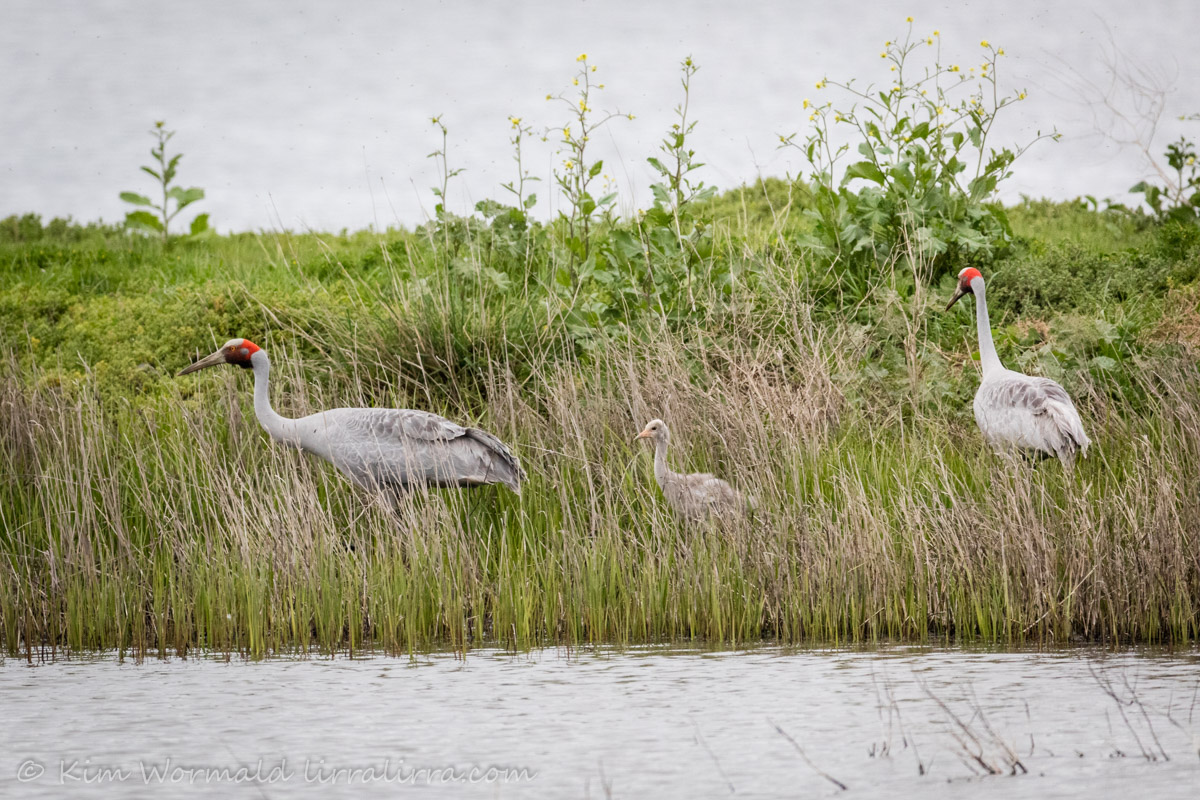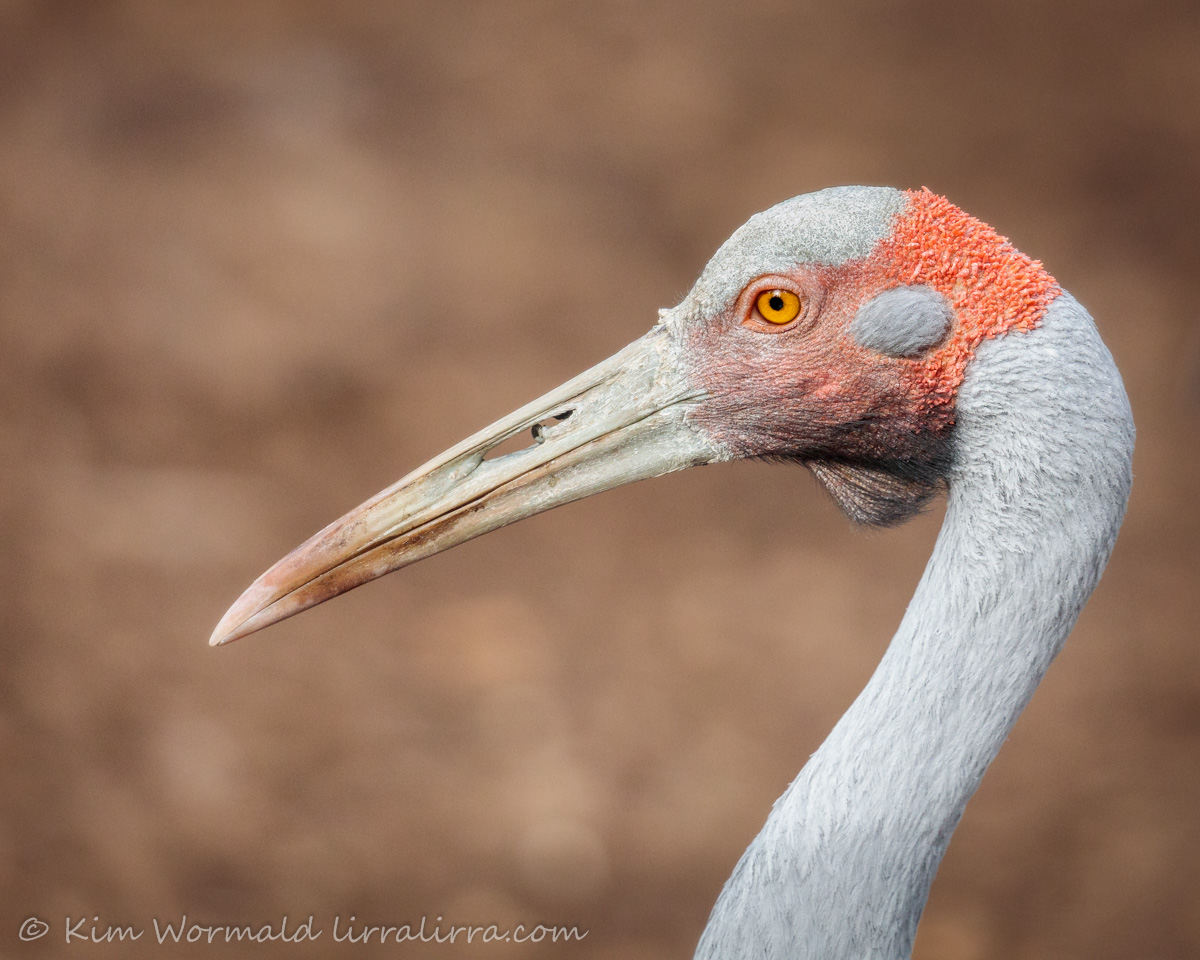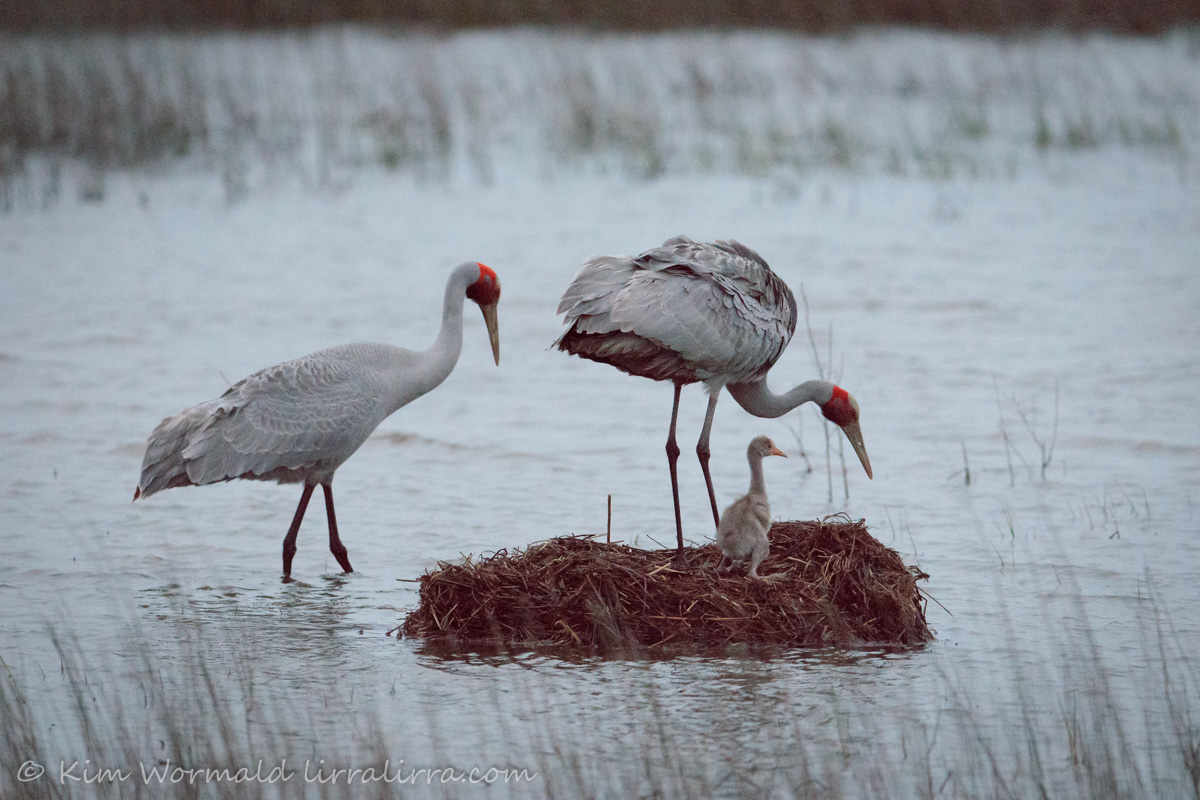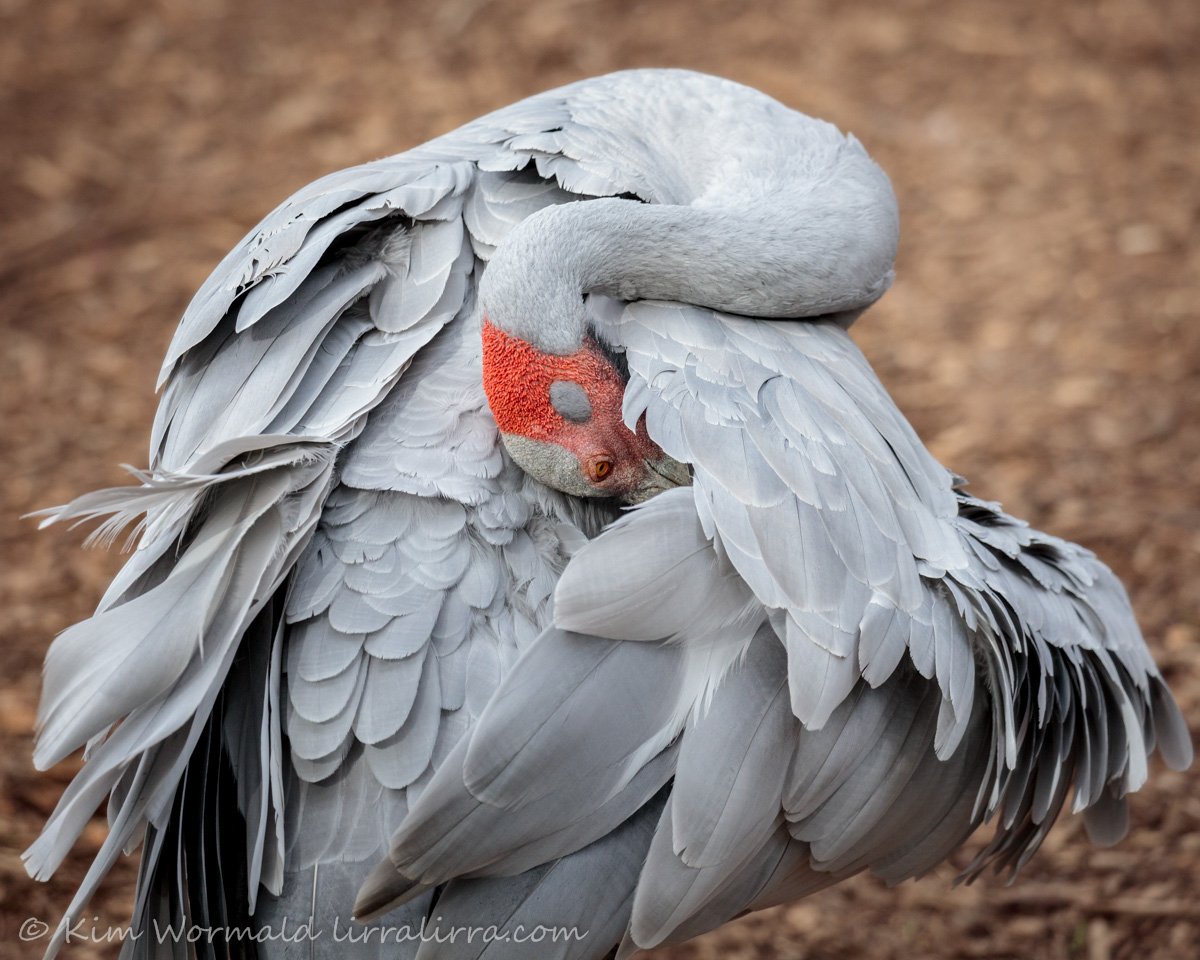It was fantastic to see the Brolga chick at the Western Treatment Plant; it would have been a bonus if it had stopped raining but nothing could dampen my smile.
Brolga (Grus rubicunda)
1/640, f5.6, ISO 6400
Over the past few weeks many images of the Western Treatment Plant Brolgas have been shared on social media, images of the Brolgas on their nest were followed by numerous images of two tiny, fluff-ball chicks. As much as I would have liked to have seen the chicks when they were newly hatched I was wary of adding to the general clamour so I waited until I heard the birds had left the nest; at this point only one chick was still surviving. As expected the nest was vacant when I arrived and I couldn’t see any sign of Brolgas but I returned later in the afternoon and the Brolga sitting on the nest; I hoped there was a chick snuggled beneath its feathers. Then the second parent flew in, the sitting bird stood and there in the dismal drizzle was one of the sweetest sights I’ve ever seen. Maybe they had briefly returned to the nest because of the weather. The light was so appalling that even an ISO of 6400 couldn’t help.
Brolgas are listed as vulnerable in Victoria. They are large cranes standing at over a metre, and famous for their dancing courtship display.

Brolga (Grus rubicunda)
1/800, f5.6, ISO 3200
I visited again the following week but the Brolgas’ nest had been commandeered by a pair of swans and the Brolga were nowhere to be seen. Later in the day the clouds were coming in and we wandered back to the general area when they walked into view across the other side of a pond! It was good to know the chick was growing fast and still safe.

Brolga (Grus rubicunda)
1/1600, f5.6, ISO 3200
The portrait above is of a sanctuary bird. The lighting was still poor but I was able to raise the speed enough to capture its quick movements and the details of its fascinating markings and the dewlap beneath its chin.
Brolga (Grus rubicunda)
1/1000, f5.6, ISO 1600
I like watching birds preening, especially as it means I know they are comfortable with my presence. Brolgas’ have remarkably flexible necks that look good among a flamboyant flurry of feathers.
Happy birding
Kim
UPDATE: The second chick did not survive. It was reported that a photographer had come between the parent birds and the chick and had not retreated despite the frantic calling of the parents and of other birders who were watching. I hope that the area is closed to visitors should the Brolgas be brave enough to attempt breeding in the area again. I regret going to see the Brolgas, even at the relatively late stage that I did. The birds are always more important than the images.
~ thank you for visiting and commenting
~ if you would like to join the subscribers who receive a weekly email letting them know when lirralirra has been updated please use the ‘subscribe’ box above right



Once again , beautiful photos . We are fortunate to see brolgas quite close to our home when we get some floodwater . Guess what, northern Vic is awash so I expect brolgas to appear on a lowlying area adjoining our little hobby farm . Beautiful birds ! We have a closeknit group of field natualust/birding neighbours so once birds are ibserved we all get a view from a nearby track that is passable .Numurkah area.
That sounds totally wonderful Paul! I’ve heard good things about Numurkah over the past year or so, hopefully I’ll get up there some time soon. I hope the Brolgas come close to your little farm and treat you and your neighbours to some stunning displays
Lovely photos, Kim.
Thank you Carole
Forget about the high ISO. You captured the moment of the two adults with their precious chick. Wonderful.
Hi Peter! I think I’m a fan of high ISO now, it was great to capture something recognisable
Oh what a privilege to see. Thank you, thank you, thank you.
It really was a privilege EC, I’m glad you liked seeing the little family too, and you are so welcome
Your understandable excitement is popping off the screen. I hope the chick survives and that you see many more in the future. I’ve decided that is what the high ISOs are for – to get an image that will later tickle the memories of events observed in conditions that did not allow high quality photos. I just wish I did not have quite so many of them in the folders on my disks!
I love your comment David, you’ve made me extra fond of high ISOs and given me hope that I’ll collect heaps more. It was good to see the chick looking strong and healthy, what magnific parents to keep it safe out there.
What a special moment it must have been to have seen the brolgas with their chick. Thanks for sharing Kim.
It was lovely Marg, such a beautiful sight
Wow how wonderful to see! Thanks so much for sharing!
It brightened a long, wet winter